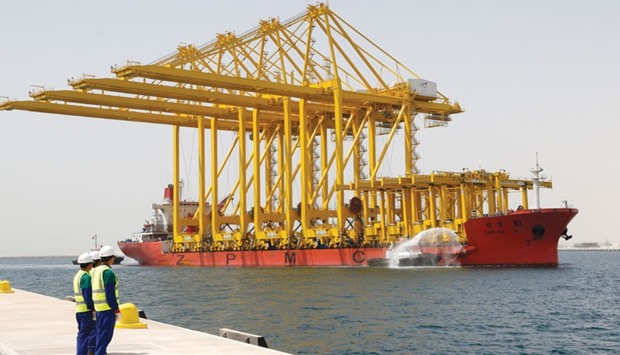Qatar’s transport infrastructure is sufficient to meet its current logistical demands, BMI Research has said in a recent report.
With heavy investment into upgrading the major Qatari airports and seaports, as well as the development of a parallel rail system to ease some of the pressure off of the road infrastructure, Qatar’s logistical chain is improving its capacity to transport freight, said BMI Research, part of the Fitch Group.
BMI Research said with an eye on the upcoming FIFA World Cup, and an overarching focus on achieving the 2030 Qatar National Vision objectives, the country’s infrastructure is being overhauled and modernised.
Combined with regionally relaxed and cost-efficient trading procedures, Qatar is well placed to ensure that its international trade is maintained at its required levels. For these reasons, BMI Research has given Qatar a score of 61.1 on 100, placing it in sixth position regionally.
At present, Qatar’s international trading and logistical infrastructure largely caters to the export of fossil fuels and import of construction materials and food. With the world’s largest LNG exporting facility, and several major airport and seaport refurbishment and development projects coming online imminently, Qatar looks set to increase its logistical capacity growth in line with the growing demands of its population, BMI Research said.
Qatar also holds “reasonable attractiveness” for foreign investment and businesses, in large part due to its high availability of cheap utilities, abundance of natural wealth, and clear openness to attracting foreign investment.
“Due to a current strong trade position, Qatar’s export growth is predicted to slow,” BMI noted. However, the high demand for its exports, the majority of which are fossil fuels, is likely to ensure it retains its wealth and trade surplus. The country’s burgeoning population and increasing international prestige are likely to drive trade growth over the medium-term.
In terms of utilities, BMI said Qatar enjoys cheap fuels and extensive domestic electrical production, with particular subsidies for foreign businesses, as well as one of the most developed IT sectors in the region.
The major risk in this section is the availability of quality water, which is low, having mostly been produced through desalination plants. For these reasons, Qatar receives a score of 66.6 on 100 for market size and utilities, placing it in fifth position regionally.
While Qatar is well-suited to meet its logistical needs in the short-to-mid-term future, BMI said there was a “major risk” in that until the rail system came online, the road network was struggling with congestion and damage, severely increasing costs and delays.
For this reason, Qatar merits a score of 52.9 out of 100 for its transport network, placing it in fifth position regionally.
BMI said, “The Qatari trade governance and regulation is regionally efficient and cheap. With a lower average cost per container, fewer documents required, and a quicker average procedure time for both importing and exporting than the regional averages, trading internationally with Qatar appear relatively easy.
“This indicates an efficient bureaucracy and a government that seems to be seeking to attract investment and trade. The major risk in this section is Qatar’s low shipping connectivity, which can be improved once the major port development projects have been completed. Qatar receives a score of 64 on 100 for trade procedures and governance, placing it in ninth position regionally.”

With heavy investment into upgrading the major Qatari airports and seaports, as well as the development of a parallel rail system to ease some of the pressure off of the road infrastructure, Qatar’s logistical chain is improving its capacity to transport freight, said BMI Research, part of the Fitch Group. PICTURE: Jayaram


